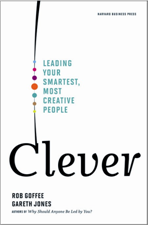What we say...
-
3 Critical Skills to Teach in Leadership Training
Sunday 1st September 2019
-
Leadership, Change and Uncertainty
Friday 6th April 2018
-
What does the Oxfam scandal tell us about organisations
Friday 23rd February 2018
-
I look forward to speaking at The HR Congress
Tuesday 31st October 2017
-
Why should anyone work here - Animation
Friday 11th December 2015
People Management

Extract: Leadership isn’t easy. Nor is it without personal risk. That may seem self-evident, yet much of the literature on this subject suggests that the prize of leadership can be effortlessly attained. It cannot. Today, perhaps more than ever before, leadership is a subtle and risky art. Leaders can no longer simply rely on hierarchy to command respect and obedience. In the increasingly flat organisational structures of the 21st century, leadership must be earned. This is all the more challenging in a knowledge-based economy, where leaders often rely on the know-how and creativity of others.
The challenge facing many leaders is how to orchestrate the efforts and get the best out of highly talented followers – whether they are accountants, software programmers, research scientists or advertising creatives. The difficulty is twofold. First, leaders often lack the technical or creative skills that their followers possess. Second, many of these talented and smart individuals do not want to be led at all. This means that leadership is a constant balancing act.
In their book, Leaders, Warren Bennis and Bert Nanus interviewed, among others, a high wire walker. Walking on the high wire is a powerful metaphor for the work of leaders. Getting it wrong can be costly. The high rates of CEO turnover that have attracted interest over recent years are proof that the price of leadership can be great.



